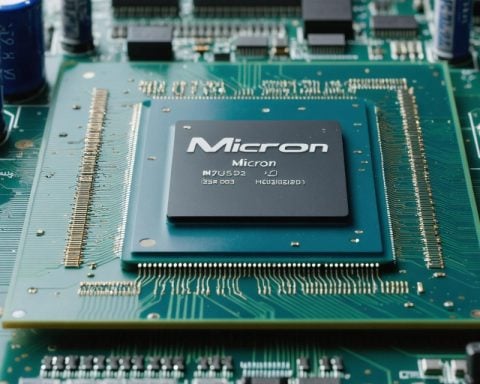- Japan must balance economic growth with fiscal fortification amid rising natural disasters and increasing social security costs.
- The Bank of Japan has raised interest rates to manage borrowing costs, complicating the issue of Japan’s high public debt.
- An unexpected 7% rise in December household spending hints at shifting consumer habits, though officials remain cautious.
- Japan navigates international trade tensions with the US, responding to tariffs by boosting American imports and investments.
- Sumitomo Mitsui Financial Group’s earnings surged due to strategic initiatives, showcasing corporate resilience and growth potential.
- Amid these dynamics, Japan continues to balance immediate economic challenges with long-term strategic goals.
Amid a backdrop of rising tides, Japan finds itself adopting a balancing act to secure its economic future. The International Monetary Fund (IMF) sends clear signals, cautioning the nation to fortify its finances as natural disasters threaten more frequently, and social security costs increase. Meanwhile, the Bank of Japan raises interest rates to contain borrowing costs, ramping up the pressure on a country already holding the highest public debt among major economies.
Despite these challenges, a peculiar mix of hope simmers beneath Japan’s economic surface. December saw an unexpected rise in household spending—7% higher than the previous year—indicating a possible pivot from a prolonged period of tempered consumption. Yet, officials remain wary of calling this a turning point, suggesting caution amid the optimism.
On the international front, Japan grapples with US tariffs, ever-mindful of its complex trade relations. President Trump’s tariffs on steel and aluminum ignite concern, but Japan’s response is to strengthen economic ties with the US. Prime Minister Ishiba promises increased imports of American LNG and unveils investment initiatives from Toyota and Isuzu, providing a sense of assurance to investors wary of trade wars.
Sumitomo Mitsui Financial Group stands as a testament to Japan’s corporate resilience. Its recent earnings surge, driven by strategic expansions and partnerships, underscores its robust financial health—capturing the attention of hedge funds and signaling potential for growth. Yet, with the relentless pace of technological advances in AI sectors, some believe better returns might lie elsewhere.
Japan’s economic narrative weaves a tapestry of cautious resilience and bold strategy—a dance between addressing immediate fiscal challenges and laying groundwork for a prosperous future.
Japan’s Economic Balancing Act: Tips for Navigating Uncertain Waters
How-To Steps & Life Hacks for Economic Resilience
1. Diversify Income Streams: Encouraging businesses and individuals to diversify income sources can help mitigate risks associated with economic instability and natural disasters. Consider incorporating global market ventures to offset domestic economic pressures.
2. Investment in Green Technology: Japan can turn to renewable energy sectors to address rising social security costs linked to aging demographics and environmental concerns. Developing solar, wind, and recycled materials industries can create jobs and reduce carbon footprints.
3. Digitization and Automation: As Japan faces labor shortages, businesses are advised to adopt automation and digital solutions to maintain productivity. Implementing AI and machine learning tools can enhance operational efficiency and help compete globally.
Real-World Use Cases
– Toyota and Isuzu’s Initiatives: By increasing investments in American LNG and expanding manufacturing in the U.S., Japanese companies can strengthen trade ties and mitigate tariff impacts, showcasing successful adaptation to international market challenges.
– Sumitomo Mitsui Financial Group: With strategic expansions focusing on fintech and digital payment systems, the group exemplifies how financial institutions can thrive by embracing technology and innovation amidst economic challenges.
Market Forecasts & Industry Trends
– AI Technology Sector: Japan’s AI sector will likely witness substantial growth due to increasing investments and technological advancements. The AI market is projected to be a cornerstone for Japan’s economic revitalization strategy, driving innovation across industries.
– Renewable Energy Investments: A significant increase in government and private sector investments in green technology is anticipated. This aligns with global trends favoring sustainable energy sources, providing pathways for economic stability.
Reviews & Comparisons
– Japan vs. Global Economic Dynamics: Compared to major economies like the US and China, Japan’s approach to trade tensions and economic stabilization through strategic alliances and technological advancements can serve as a model for economic resilience under external pressures.
Controversies & Limitations
– Public Debt Concerns: Japan’s debt-to-GDP ratio remains a significant issue. Critics argue that without structural financial reforms, short-term strategies may fail to achieve long-term solvency. Policymakers need to balance debt management with economic growth initiatives.
– Trade Tariffs: Ongoing US tariffs on steel and aluminum are contentious, highlighting the need for Japan to navigate these challenges through diplomatic channels and trade negotiations.
Features, Specs & Pricing
– Interest Rate Adjustments: The Bank of Japan’s decision to raise interest rates aims to curb inflation and manage public debt. Such monetary policy decisions can impact borrowing costs and, subsequently, consumer spending.
Security & Sustainability
– Disaster Preparedness: Japan’s geographic vulnerability to natural disasters demands robust infrastructure investments and community resilience programs to ensure economic stability in the face of climate change impacts.
Insights & Predictions
– Future Economic Growth: Analysts predict that Japan must continue to leverage technological innovation, expand international trade partnerships, and invest in sustainable industries to drive long-term growth.
Pros & Cons Overview
– Pros: Economic resilience through technology, strong international trade relationships, rising household spending.
– Cons: High public debt, exposure to natural disasters, trade tensions.
Actionable Recommendations
– Embrace Technological Advances: Businesses should invest in AI and automation to stay competitive globally.
– Strengthen Global Trade Alliances: By building stronger economic ties, Japan can offset potential tariffs and trade disruptions.
– Focus on Sustainability: Prioritize investments in renewable energy to ensure a sustainable economic future.
Related Links
Explore more about Japan’s economic strategies and market dynamics with trusted sources like the IMF and the Bank of Japan.



















